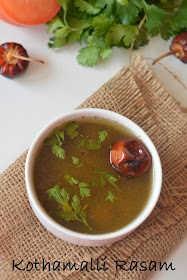The Upma Kozhukattai is one of the
popular tiffin items in a Tambram household. These are nothing but steamed rice
rava dumplings. They taste great with sambar and chutney.
Now there is story associated with
these kozhukattais, which was told to me by my grandmother. I think many of you
would be knowing it. But still I would like to share it here. I don’t remember
the story to the T; please feel free to correct me. Also, please forgive my story telling skills :)
There was a lady with 6 girls.
Everyday, she would make some snack/tiffin for them when they are back from school.
One day, the mother prepared upma kozhukattais and kept them covered in a
kadai. She had made exactly 6 in number. Now the first girl came back from
school and said, “amma, I am hungry”, mother replied, “there are kozhukattais
in the kitchen, take one and leave the remaining for your sisters. The girl
took one and closed the vessel. Next girl came and asked the same “Amma, I am
hungry”. Mother gave the same reply. This continued as one by one the girls
came from school. Now the fifth girl was really hungy. So she ate the one
extra. After eating, she realized that her mother would be mad when she found
out that she had eaten her sister’s share. She caught a frog and put it inside the vessel
and closed it.
The last sister came home, and asked
her mother for something to eat. Her mother gave the same reply. When she went
and opened she saw the frog and immediately closed the lid. Then she started “Amma
Amma, Kozhukattai ku kannum undo di” (mother mother, does the kozhukattai have
eyes). Her mother is surprised at the question, and says what are you
blaberring child, eat the kozhukatti and let me be in peace. The girl again
starts “amma amma kozhukattai vayum undo di”, mother says no. The girl goes on.
Finally mother gets very irritated and comes to the kitchen, and she opens the
lid and gets a fright when the frog jumps out.
Finally the 5th girls gets
good a scolding from her mother for having been so naughty.
Whenever I make kozhukattais, I
automatically get reminded of this old story.
Coming back to the kozhukattais, u
can add a fistful of tuar dal and dried red chillies instead of green chillies while
grinding the rice, that also gives a good taste. I have used the Rice Rava/idli
rava also to make these kozhukattais and it comes out well. And saves the time
of grinding the rice. Make sure to use good quality rice.
Makes about – 18
What you'll need
- Rice Rava – 2 cup *
- Scraped Coconut – ¾ cup
- Water – 4 cup
- Salt to taste
For tempering
- Coconut oil – 2 tbsp
- Mustard Seeds – 1 tsp
- Channa Dal/Kadala Paruppu – 1 tbsp
- Urad Dal/Ulutham Paruppu – ½ tbsp
- Asafoetida – a generous pinch
- Green Chillies – 1 or 2, chopped
- Curry Leaves – few
Method
- Heat a Kadai with oil, temper with
mustard seeds, once the crackle add the channa dal, and urad dal and fry till
the dals turn golden.
- Next add the asafoetida, green
chillies and curry leaves and fry for a minute.
- Now add the measured water, the water
ratio should be 1:2, one part rice rawa and 2 parts water.
- Add the coconut gratings and salt to
taste and let this come to rolling boil.
- Now, turn the heat to medium and
slowly add the rice rava and stirring simultaneously.
- Keep stirring for 3 to 4 minutes,
until all the water is evaporated and the whole thing comes together.
- Let it cool for few minutes, now
dipping your hands in water, take a golf sized ball of the upma and shape them
into round balls or oblong shapes, choice is yours. Repeat with rest of the upma.
- In a pressure cooker, pour some
water, and place the kozhukattais in a steamer. Place it in the cooker and
close the lid, keep on high, once the steam starts coming through the vent,
reduce heat to low and steam for 10 to 15 minutes. U can use idlis mould too.
- Serve hot with chutney/Sambar.

Notes:
For making rice rava
Method 1:
Wash and rinse the rice well, then
spread it on a cloth and let dry in shade. Pulse in mixie until rava
consistency. Sieve and use.
Method 2:
If you forget to wash and dry the
rice, then just pulse the rice in mixie until rava like, sieve and use.
Or
You can also use Idli Rava.
I have tried all the 3 equally good
kozhukattais, though sieving is important when you grind the rice so as to
remove the fine flour and get soft kozhukattais.


















